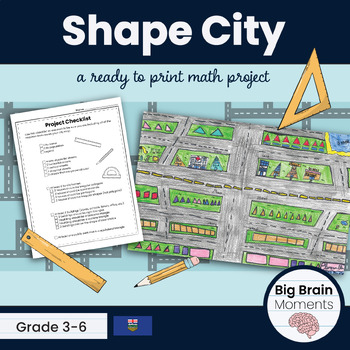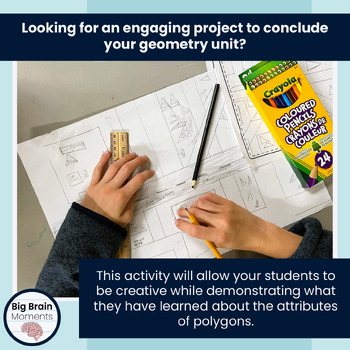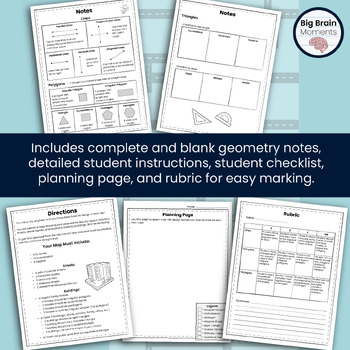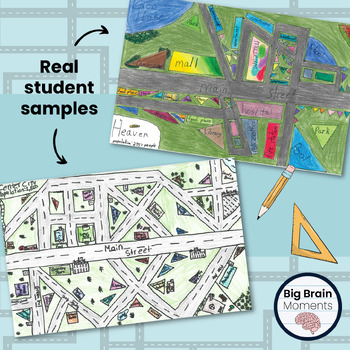Shape City - Hands on Geometry Math Project Focusing on Triangle and Polygons
- PDF
Description
Looking for a fun project to conclude your geometry unit, and help your students strengthen their understanding of polygons and triangles, try this shape project!
To complete this hands on geometry project, students are encouraged to tap into their creativity to design their own city. Following the detailed instructions students must demonstrate their knowledge of lines, polygons, and triangles by including specific elements into their map.
Included in your digital download, you will receive:
- Detailed and easy to follow student instructions/assignment sheet
- Project checklist (to help students ensure they have all of the required elements)
- Student Planning Page
- Rubric for easy marking
- Basic geometry notes for students to reference when completing their project
- Blank notes for students to fill out themselves and reference when completing their project.
Although we originally designed this activity is a project to complete our geometry unit it could easily be adapted and used the following ways:
- Review
- Small group work
- Guided math
- Math intervention
- Sub plans
- Early finishers
- Morning work
The primary objective of this activity is to provide students with extra practice to strengthen their understanding of geometric properties of lines and shapes.
We think this activity aligns well with 4.G.A.1, 4.G.A.2, 5.G.B.3, and 5.G.B.4 objectives from the Common Core State Standards Math Curriculum.
We also designed this activity to specifically meet the following New (2022) Alberta Grade 3 and Math Curriculum outcomes:
Knowledge
- Geometric properties can describe relationships, including perpendicular, parallel, and equal. (Grade 3)
- Parallel lines or planes are always the same distance apart. (Grade 3)
- Perpendicular lines or planes intersect at a 90° (right) angle. (Grade 3)
- Polygons include: triangles, quadrilaterals, pentagons, hexagons, octagons (Grade 3)
- Regular polygons have sides of equal length and interior angles of equal measure. (Grade 3)
- Side length can be used to describe triangles as: equilateral, isosceles, scalene (Grade 4)
Understanding
- Geometric properties define a class of polygon. (Grade 3)
- Geometric properties define a hierarchy for classifying shapes. (Grade 4)
Skill & Procedures
- Investigate the relationships between the sides of a polygon, including perpendicular, parallel, and equal, using referents for 90° or by measuring. (Grade 3)
- Classify polygons as regular or irregular using geometric properties. (Grade 3)
- Describe triangles according to side length. (Grade 4)
- Classify quadrilaterals in a hierarchy according to geometric properties. (Grade 4)
If you enjoyed using this product in your classroom, please leave us a review and follow our Teacher Pay Teacher store so you can stay up to date about more great products like this one!
Did you know that when you leave a review on a TPT product you get a credit to spend on future products? It is a win win for everyone!
Looking for other activities to include in your geometry unit check out the following:





